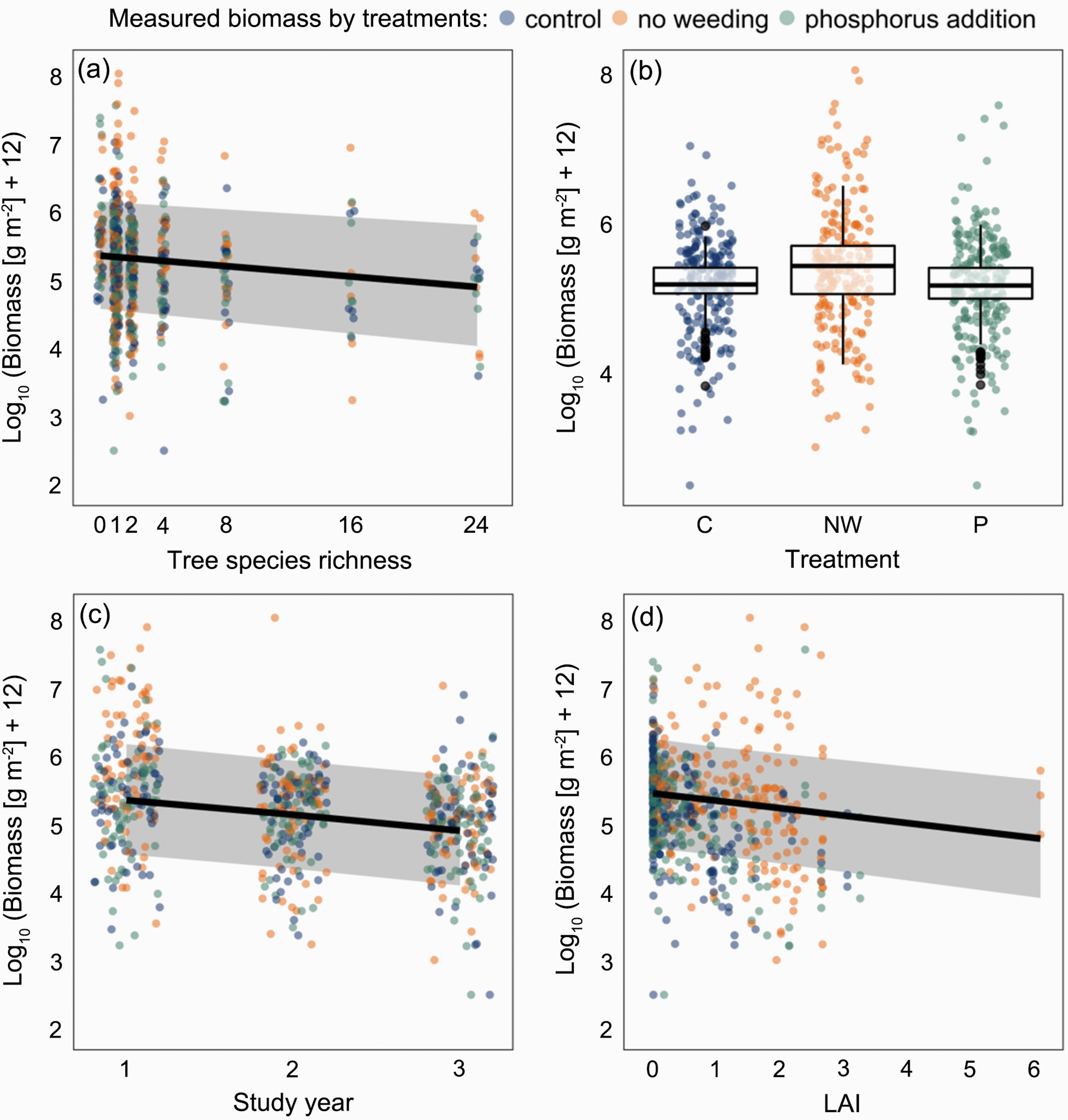Aims Positive biodiversity–ecosystem functioning relationships have been widely reported, predominately from grassland ecosystems. However, this does not necessarily have to apply accordingly in more complex situations such as in forests across different vertical strata. For instance, overstorey tree species richness has been shown to be associated with a lower understorey productivity. Whether or not tree species richness effects add to understorey productivity by increasing (i.e. due to habitat heterogeneity) or reducing resource availability (i.e. through increasing competition) and whether understorey productivity is indeed being governed more strongly by tree species identity are likely to change over time. Moreover, studies also suggested that richness–productivity relationships change with the environmental context. Using an experimental forest plantation with manipulated tree species richness, this study examined these temporal and environmental dynamics across strata.
Methods In the context of the Biodiversity-Ecosystem Functioning project in subtropical China (BEF-China), we made use of understorey biomass samples repeatedly collected over a time period of 3 years along a tree species richness gradient. The effects of tree species richness, tree species identities and time were studied across different environmental treatments for their impact on understorey biomass.
Important Findings While we found significant and consistent tree layer identity effects on understorey biomass, no such effect was encountered for tree species richness. Our results also indicate that among structural layers in forests, there might not be a single, generalizable overstorey species richness–understorey productivity relationship, and that the extent as to which overstorey-related environmental factors such as light transmittance contribute to understorey productivity change with time. Overall, we demonstrate that temporal dynamics should be considered when studying relationship among structural layers in forests.
Literature:
Markus S. Germany*, Helge Bruelheide, Alexandra Erfmeier and Cameron Wagg. 2021. Drivers of understorey biomass: tree species identity is more important than richness in a young forest. Journal of Plant Ecology. 14(3): 465-477. https://doi.org/10.1093/jpe/rtab004.

